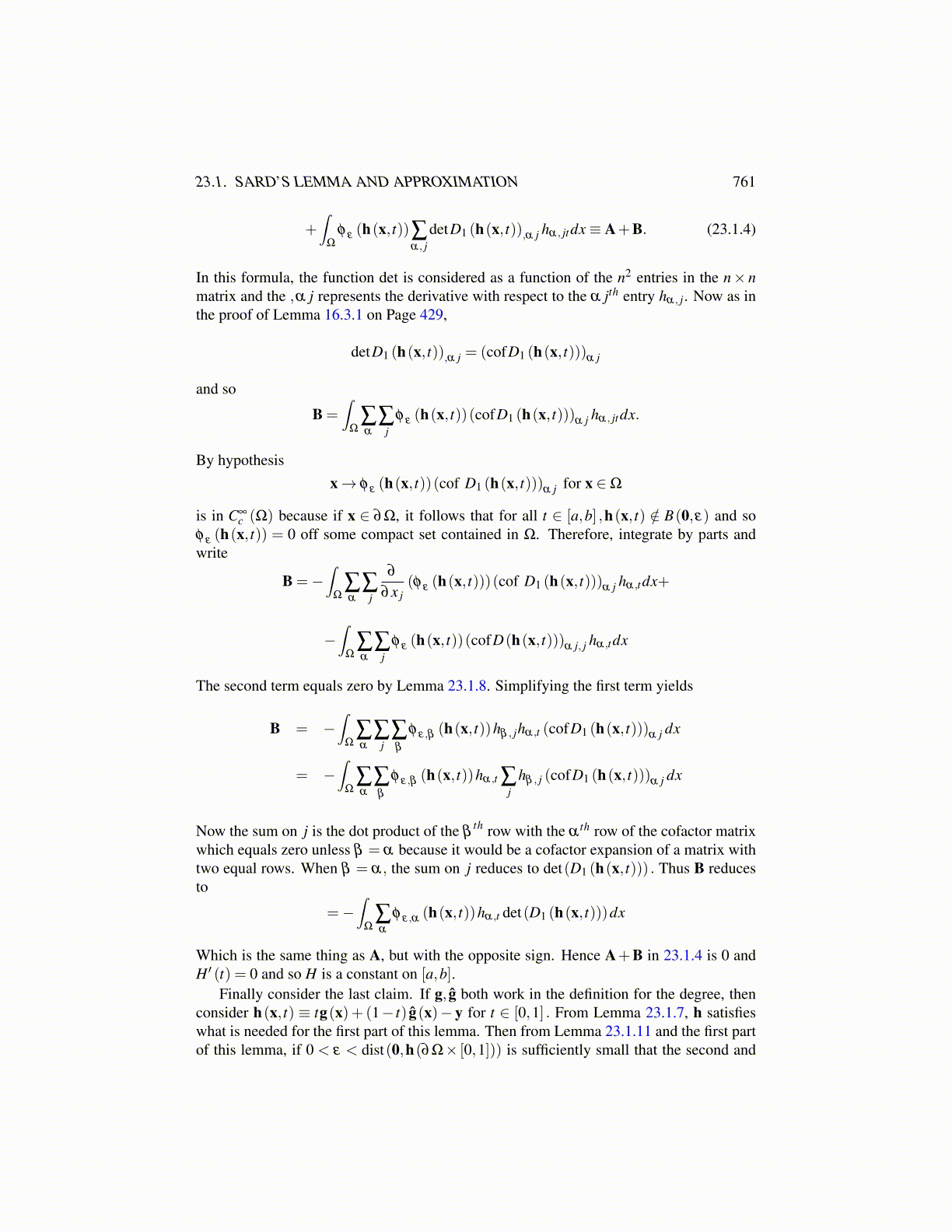
23.1. SARD’S LEMMA AND APPROXIMATION 761
+∫
Ω
φ ε (h(x, t))∑α, j
detD1 (h(x, t)),α j hα, jtdx≡ A+B. (23.1.4)
In this formula, the function det is considered as a function of the n2 entries in the n× nmatrix and the ,α j represents the derivative with respect to the α jth entry hα, j. Now as inthe proof of Lemma 16.3.1 on Page 429,
detD1 (h(x, t)),α j = (cofD1 (h(x, t)))α j
and so
B =∫
Ω∑α
∑j
φ ε (h(x, t))(cofD1 (h(x, t)))α j hα, jtdx.
By hypothesisx→ φ ε (h(x, t))(cof D1 (h(x, t)))α j for x ∈Ω
is in C∞c (Ω) because if x ∈ ∂Ω, it follows that for all t ∈ [a,b] ,h(x, t) /∈ B(0,ε) and so
φ ε (h(x, t)) = 0 off some compact set contained in Ω. Therefore, integrate by parts andwrite
B =−∫
Ω∑α
∑j
∂
∂x j(φ ε (h(x, t)))(cof D1 (h(x, t)))α j hα,tdx+
−∫
Ω∑α
∑j
φ ε (h(x, t))(cofD(h(x, t)))α j, j hα,tdx
The second term equals zero by Lemma 23.1.8. Simplifying the first term yields
B = −∫
Ω∑α
∑j∑β
φ ε,β (h(x, t))hβ , jhα,t (cofD1 (h(x, t)))α j dx
= −∫
Ω∑α
∑β
φ ε,β (h(x, t))hα,t ∑j
hβ , j (cofD1 (h(x, t)))α j dx
Now the sum on j is the dot product of the βth row with the α th row of the cofactor matrix
which equals zero unless β = α because it would be a cofactor expansion of a matrix withtwo equal rows. When β = α, the sum on j reduces to det(D1 (h(x, t))) . Thus B reducesto
=−∫
Ω∑α
φ ε,α (h(x, t))hα,t det(D1 (h(x, t)))dx
Which is the same thing as A, but with the opposite sign. Hence A+B in 23.1.4 is 0 andH ′ (t) = 0 and so H is a constant on [a,b].
Finally consider the last claim. If g, ĝ both work in the definition for the degree, thenconsider h(x, t) ≡ tg(x)+ (1− t) ĝ(x)− y for t ∈ [0,1] . From Lemma 23.1.7, h satisfieswhat is needed for the first part of this lemma. Then from Lemma 23.1.11 and the first partof this lemma, if 0 < ε < dist(0,h(∂Ω× [0,1])) is sufficiently small that the second and